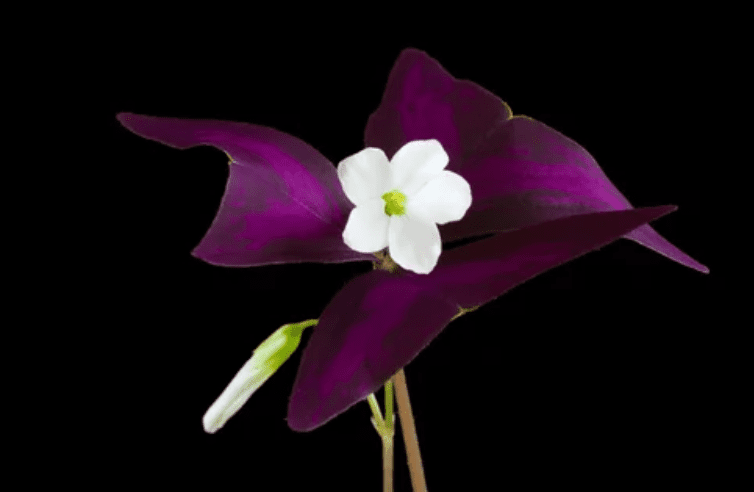
Shamrock plants are an easy-care perennial that grows outdoors in U.S. Department of Agriculture plant hardiness zones 1 through 8 and indoors year-round. Shamrocks, also known as oxalis or wood sorrel, have bright green foliage that turns yellow in the fall before dying back entirely during winter.
In early spring, shamrocks send up stems with flowers resembling clover blossoms with four petals instead of the typical three. Learn how to grow a shamrock plant from seed, transplanting it into your garden or indoors to enjoy all season long!
How to Grow a Shamrock Plant
You have a few options if you want to grow a shamrock plant. You can buy a plant already developed from bulbs or rhizomes or start from seeds or bulbs yourself. Shamrock plants are easy to care for and have colorful foliage and flowers that can brighten your home.
Growing From Seeds
To grow a shamrock plant from seeds:
- Cool them in the refrigerator for at least 24 hours before sowing them.
- Press them gently into moist potting soil without covering them completely.
- Place the pot in a bright, but not direct, light and keep the soil wet but not soggy.
Growing From Bulbs/Rhizomes
To grow a shamrock plant from bulbs or rhizomes, you need to plant them twice their height and space them 1 inch apart in moist potting soil. Place the pot in a bright, but not direct, light and water regularly but let the soil dry between waterings. You can also fertilize the plant with a balanced houseplant food every two to three weeks while it is flowering.
Shamrock plants like cool temperatures and high humidity, so avoid placing them near heat sources or dry air. Some species may go dormant for a few weeks or months during the year, which is normal. When this happens, stop watering and move the plant to a cool, dark place until you see new growth.
Shamrock plants are not true shamrocks but are a type of mint plant, and they are associated with good luck and St. Patrick’s Day. Several varieties are available, such as green, purple, burgundy leaves and white, pink, yellow, or red flowers. Keeping them away from curious pets is also a good idea due to their toxicity.
Shamrock Plant Care
Shamrock plants grow best in partial shade, so they need to be placed where they will receive some afternoon sun but not too much. They also prefer soil that is slightly acidic and moist but well-drained.
Shamrock plants need to be watered regularly, but only when the top of the soil feels dry to your touch—shamrocks hate being over-watered! Fertilize shamrock plants monthly during the growing season with a water-soluble fertilizer such as Miracle-Gro Organic.
Choice Plant Food for Flowers & Vegetables (1-0-0). Report shamrocks every spring or early summer when they outgrow their pots (you’ll know this because it becomes difficult for them to support their weight).
How to Take Care of a Shamrock Plant Indoor and Outdoor
Taking care of a Shamrock Plant, indoors or outdoors, can be a rewarding gardening experience with some know-how. Indoors, placing your Shamrock Plant near a window where it can receive bright but indirect sunlight is essential.
These plants thrive in cooler temperatures, between 60 to 70 degrees Fahrenheit, and require well-draining potting soil. Watering should be moderate, ensuring the soil remains moist but not soggy to avoid root rot.
Outdoor Shamrock Plants need similar conditions. Choose a spot that offers partial shade, especially during the hottest day. The soil should be rich, well-draining, and kept consistently moist. However, beware of overwatering; it’s best to let the top layer of soil dry out between watering sessions. In colder climates, it’s advisable to dig up and store the bulbs during winter, then replant in spring.
Remember, Shamrock Plants go into dormancy, usually in the fall or winter, where they will appear to die off. Don’t panic; this is normal! Reduce watering during this period and wait for them to spring back to life. With careful attention to their needs, Shamrock Plants can add a touch of green and a bit of luck to your indoor or outdoor spaces.
Shamrock Plant Fertilizer:
Apply an all-purpose liquid fertilizer once per month during active growth periods from April through October (or whenever new growth appears) at half strength according to package directions–this will help ensure strong, healthy stems without encouraging excessive flowering, which may reduce stem strength over time.
Purple shamrock plants can be grown outside, but they prefer shade.

Purple shamrock plants can be grown outside, but they prefer shade. They will grow in partial sunlight, but the plant will be smaller and less colorful than if grown in full sun. If you want to grow purple shamrock plants indoors, ensure you have plenty of light so that they get enough energy from the sun’s rays to produce their vibrant coloration.
When planting outside, make sure that at least part of your plant will receive some shade from something like a building or structure; this way, the rest of your garden won’t get too much direct sunlight while still allowing your plant to thrive under its protective covering (or “umbrella”).
Shamrock Plant Problems
Shamrock plants are popular houseplants or garden plants with clover-like leaves and colorful flowers. They are easy to grow and care for but may encounter problems affecting their health and appearance.
Here are some common shamrock plant problems and how to deal with them:
Chlorotic ring spot
This is a viral disease that causes yellow rings on the leaves of the shamrock plant. Aphids spread it, so controlling these pests is essential to prevent the infection. The disease has no cure, but infected leaves and stems can be removed and disposed of to reduce its spread.
Fungal rust
This is a fungal disease that causes orange or brown spots on the undersides of the leaves. It usually affects potted shamrock plants and can be prevented by providing good air circulation and avoiding overwatering. Infected plants should be isolated and treated with neem oil or a chamomile tea rinse. Damaged leaves should be pruned and discarded.
Spider mites
These tiny pests suck the sap from the leaves, causing them to wilt and turn yellow. They also produce fine webs on the plant. They can be controlled by spraying the plant with water mixed with a drop of dish soap and a clove of garlic. Alternatively, insecticidal soap or neem oil can be used to kill them.
Lack of water
Shamrock plants need regular watering to keep their soil moist but not soggy. If they can dry out, they will droop and lose their vigor. To avoid this, water them when the top inch of soil feels dry to the touch, and make sure they have good drainage.
Insufficient light
Shamrock plants need bright but indirect light to thrive. If they are exposed to too much direct sun, they may get scorched or faded. They may become leggy or weak if they are kept in too dark conditions. To provide them with optimal light, place them near a window that receives morning or afternoon sun, or use artificial lights if needed.
Improper soil
Shamrock plants prefer well-drained soil that is rich in organic matter. They do not like heavy or compacted soils that may cause root rot or nutrient deficiency. To improve their soil quality, use a potting mix designed for houseplants or add compost or perlite to the garden soil.

Conclusion
Caring for a Shamrock Plant indoors and outdoors involves understanding and catering to its unique needs. With its preference for cool temperatures, indirect sunlight, well-draining soil, and moderate watering, this plant can be a joy to grow. It’s important to respect its natural life cycle, including the dormancy period, to ensure it thrives.
While each Shamrock Plant might need a slightly different care approach based on its specific environment, these general guidelines will help you cultivate a healthy, vibrant plant. Whether a novice or an experienced gardener, the Shamrock Plant’s rich green leaves and delicate white flowers can bring a splash of color and a dash of luck into your life.
Last update on 2024-07-26 / Affiliate links / Images from Amazon Product Advertising API























